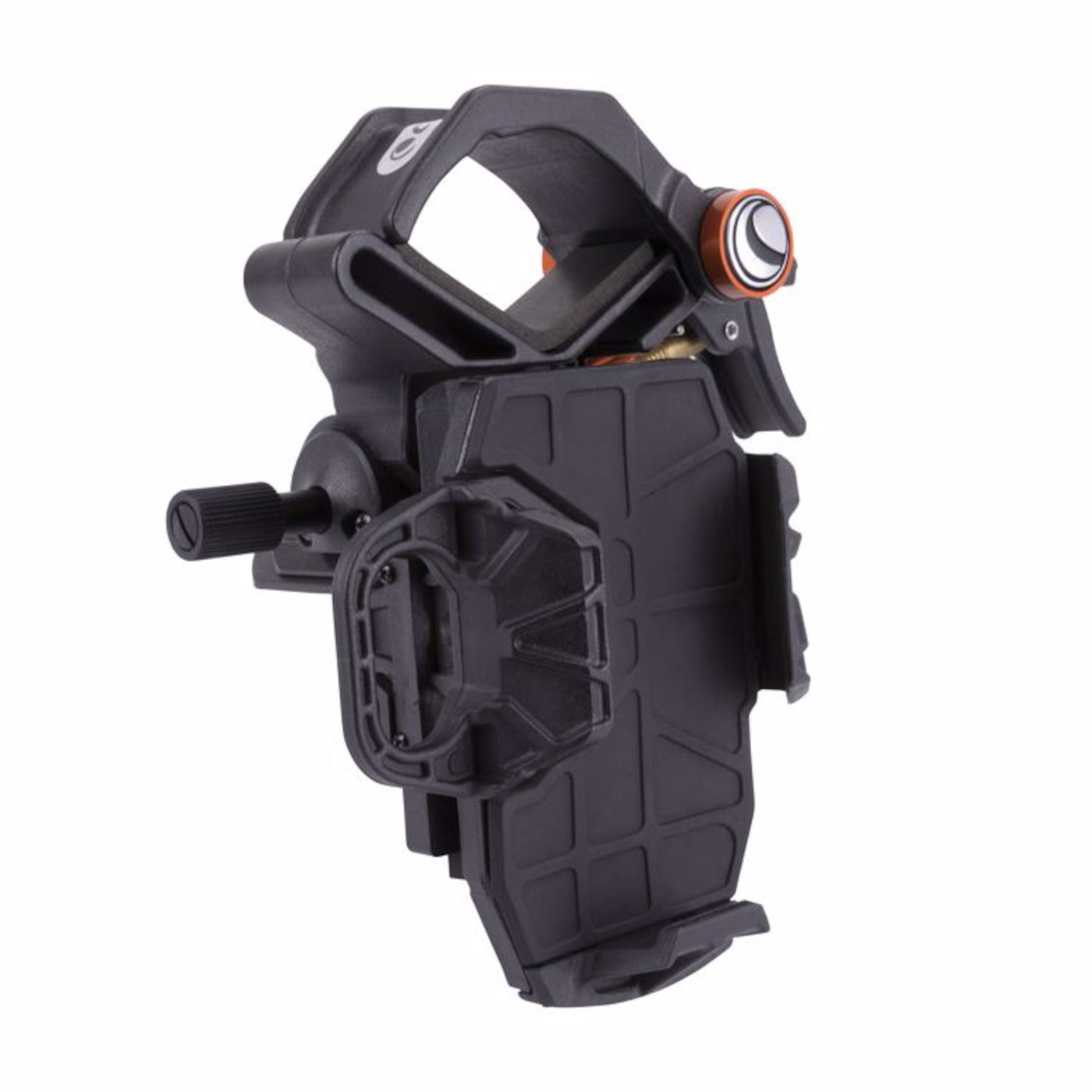
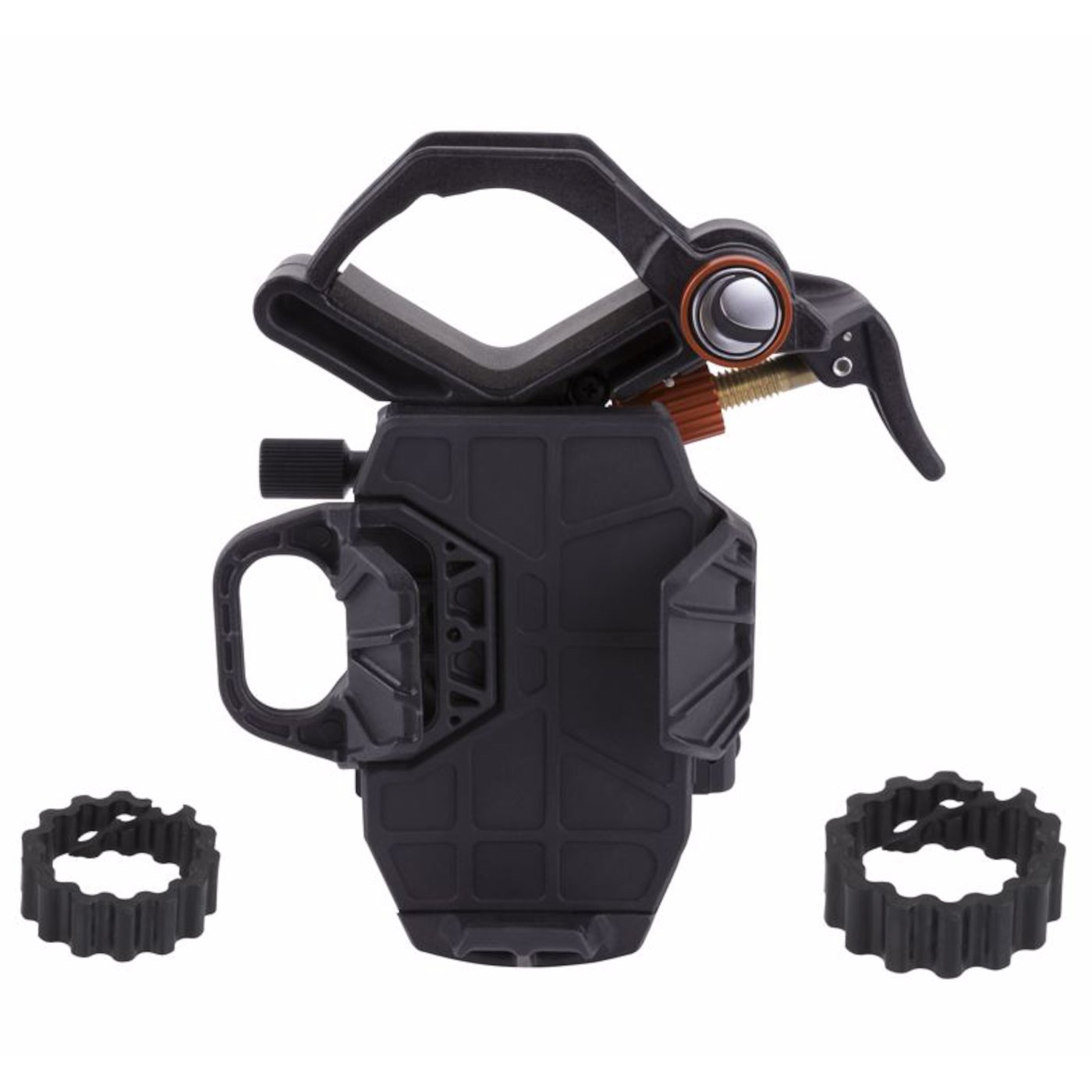
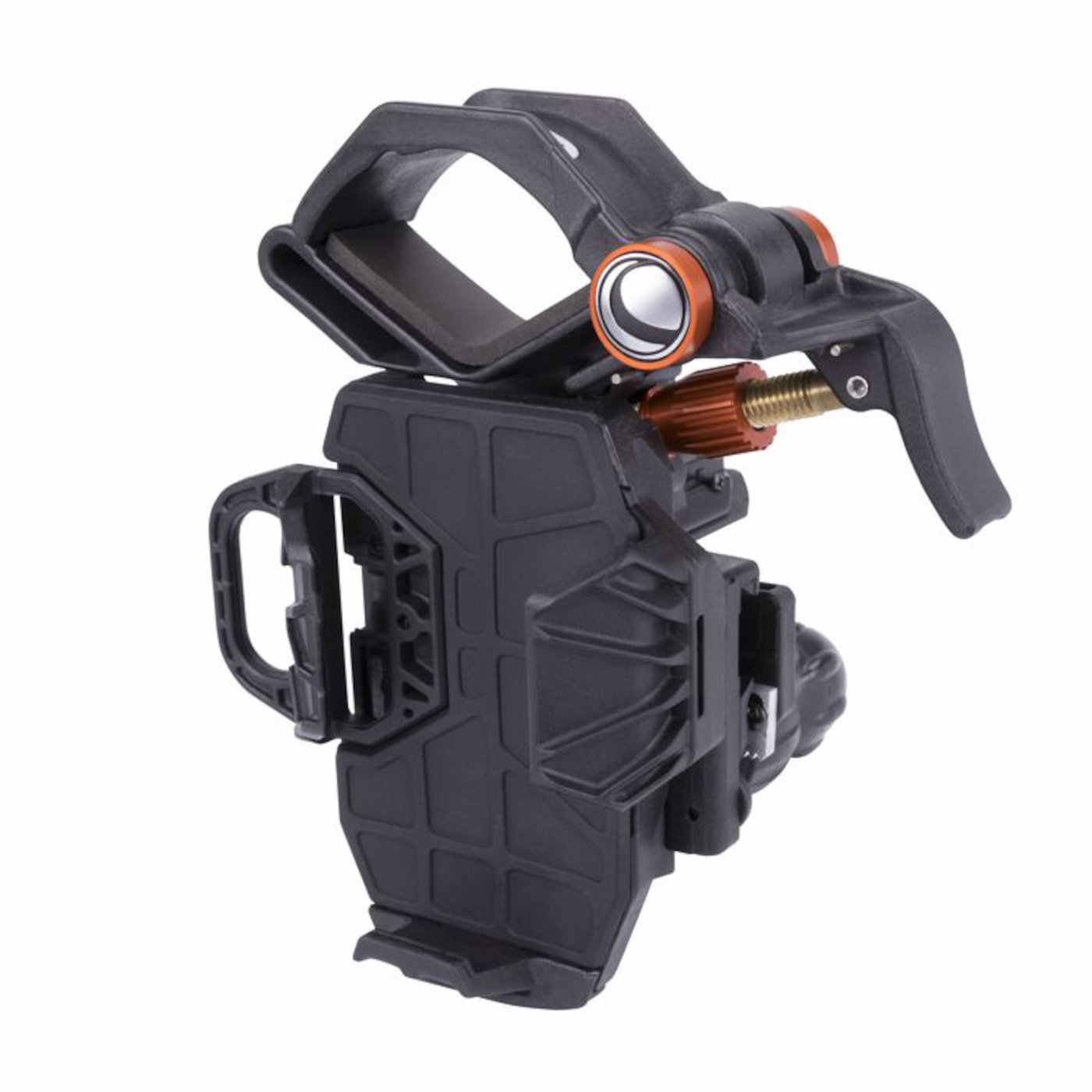
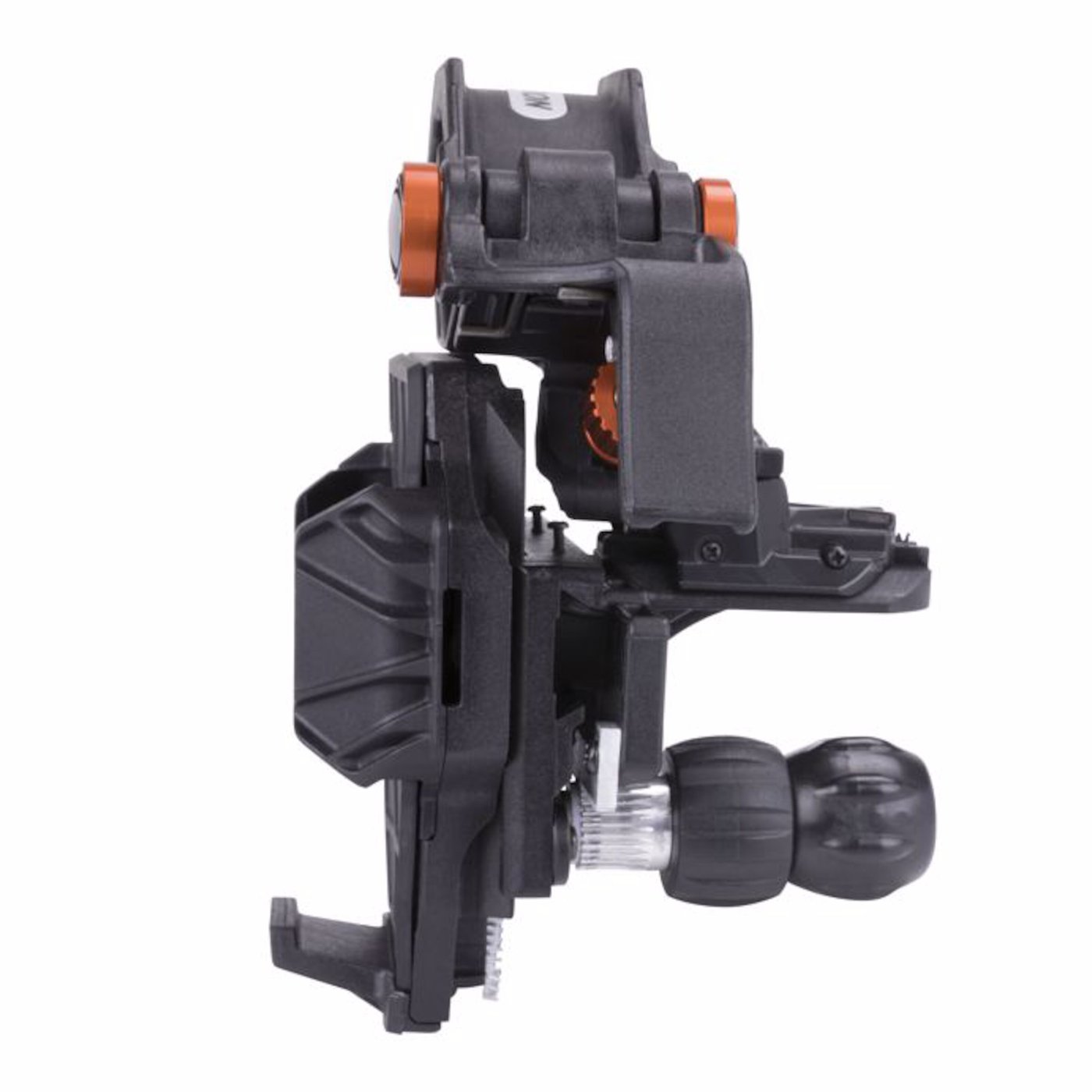
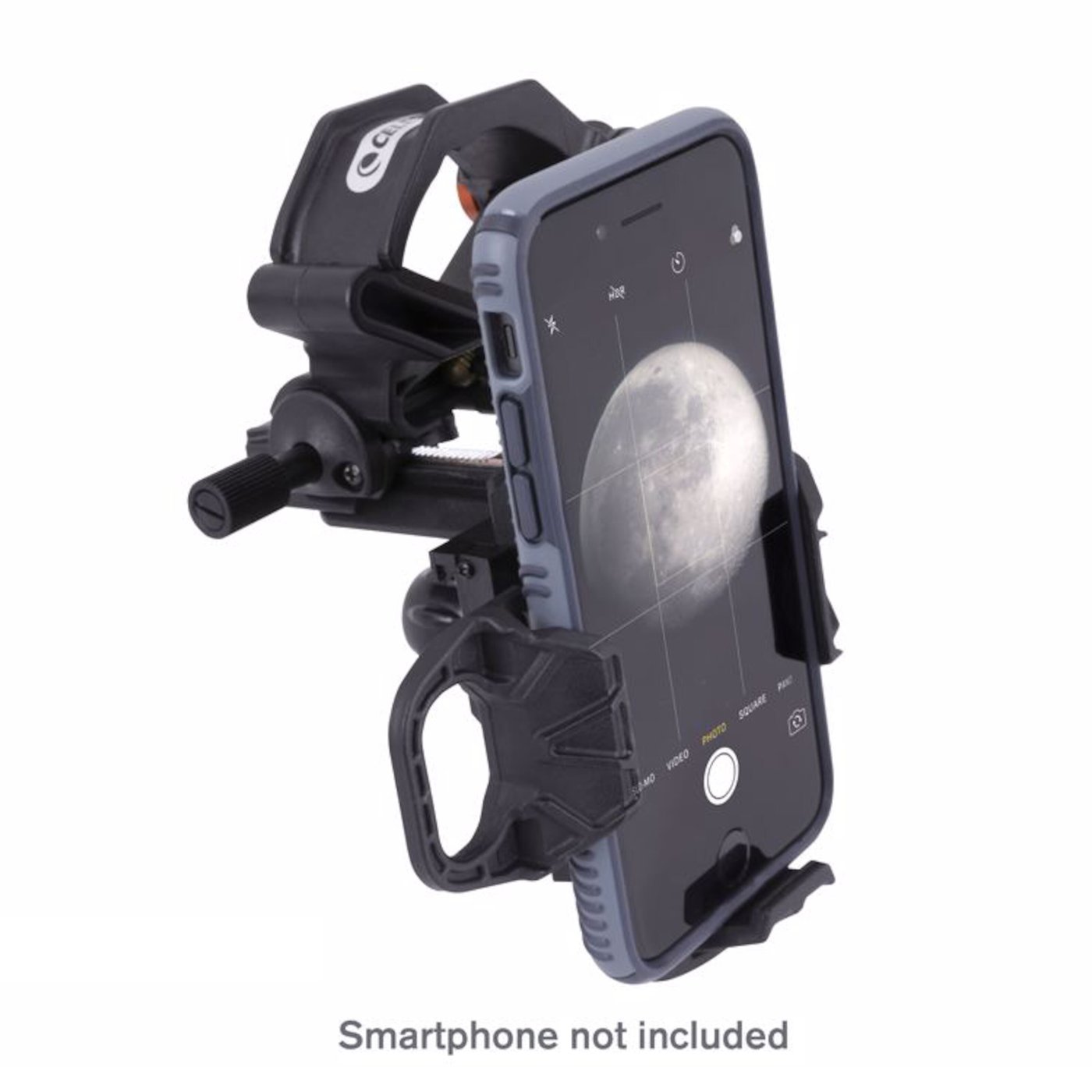







Fri frakt
Artikelnr: 12004
Celestron NexYZ 3 Digiscopingadapter
Mer från:
Mobilhållare för teleskop
- För teleskop, kikare och mikroskop
- 3-axlad och precis justering
- Robust konstruktion
Adapter för att fotografera planeter och himlakroppar med mobilen och teleskopet. Kan också användas med andra optiska instrument som mikroskop och kikare. Enkel och snabb montering med snabbfäste för Ø35 till 60 mm okular. Justerbar i 3 axlar för att kunna placera mobiltelefonens kameralins helt parallellt med det optiska instrumentet. Detta är helt avgörande för att lyckas få till bra bilder. Inkluderar adapterring för användning med Ø25 mm okular. Passar de flesta mobiltelefoner. Tillverkad helt i metall och kraftig, gummerad plast.
Celestron NexYZ 3 Digiscopingadapter
Mobilhållare för teleskop
Artikelnr: 12004
NexYZ Imaging Tips and Tricks
Camera Controls
The standard camera apps that come preinstalled with your smartphone offer very rudimentary controls and are designed to automatically adjust focus and exposure. This is not a problem for everyday photography such as landscapes or portraits, but can be a problem for imaging a planet or the Moon where you have a very bright object against a very black sky. The phone’s camera tries to compensate for the imbalance of lighting by brightening up the dark areas, but this causes the bright areas to overexpose and blow-out the details. If your camera app settings do not allow you to manually select the focus point or have an option to disable the autofocus or auto-exposure, you may want to consider using a different camera app. You can find lots of aftermarket apps for iOS and Android that offer a greater amount of control for your camera. Many of these are free.
Vibration
To help eliminate any vibration induced when you touch the camera to snap the image, try using a shutter delay. Some apps offer a 2, 5, or 10 second delay before snapping the image. This will give the vibrations a chance to dissipate before actually taking the images.
Subjects to Shoot
Using this method, you should be able to take images of daytime terrestrial objects and nighttime astronomical images of the Moon and bright planets (Venus, Mars, Jupiter and Saturn). Unfortunately, smartphone camera sensors are not designed to work well in very low light, so it will not be possible to capture faint astronomical objects such as galaxies or nebulae in this manner.
Magnification
When looking at the Moon or planets with a stationary telescope, you will notice that the object appears to drift across the field of view. This is actually caused by the Earth’s rotation. If you were looking visually through your 20 mm eyepiece, a planet would take approximately 3.0 minutes to drift across the entire eyepiece’s field of view. If you are using the 10 mm eyepiece, it would only take 1.5 minutes. The smartphone does not use the entire eyepiece’s field of view and only uses the center of it, making the motion appear even faster. When centering an astronomical object in the phone’s field of view, try leading the target. Try to point the scope ahead of the planet so that it is just entering the field of view. This will maximize the amount of time it takes to drift across the entire field, allowing you more time to take images before needing to re-aim the telescope. The 10 mm will have a narrower field of view and will need to be adjusted more often as a result. Working with the 20 mm eyepiece will be easier at the start. Once you are comfortable with it, try stepping up to the 10 mm eyepiece.
Fri frakt från 599:-
Fria fraktalternativ vid köp från 599:-
Öppet köp i 100 dagar
Som medlem! Även fri retur i alla butiker
Snabba leveranser
1-2 arbetsdagar leveranstid på lagervaror
Hämta i butik, GRATIS!
Reservera online, redo att hämtas ut efter 15 minuter. Kostnadsfritt!

Celestron NexYZ 3 Digiscopingadapter
Fri frakt
